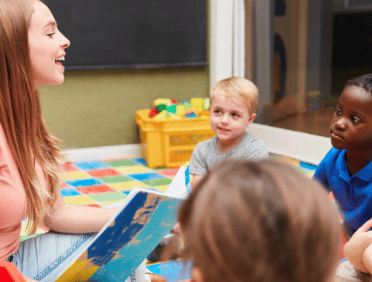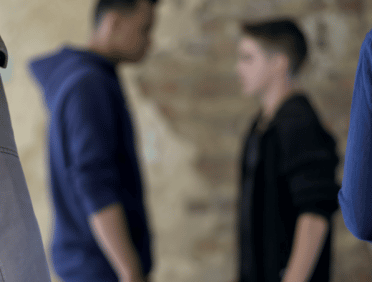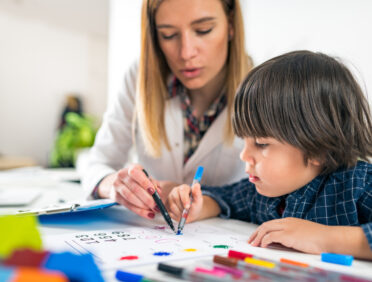Both children and vulnerable adults have a right to be safeguarded from harm. However, understanding what safeguarding is, how safeguarding vulnerable adults works, the difference when safeguarding vulnerable children, and how to safeguard in common environments are all very important things to know. After all, there is no excuse for not being educated, so it is the responsibility of staff and the employer to make sure that every party who works with vulnerable adults or children has the necessary knowledge and skills required to participate in active safeguarding.
What is Safeguarding?
Safeguarding is a very important process because it helps to protect vulnerable adults and children from neglect, abuse, and harm. The safety and well-being of these parties is very important as they come into contact with the different services given by workplaces, schools, and health and social care providers.
Every member of staff who works in either a workplace that deals with vulnerable adults or in a school has a duty of care to protect all staff and children from harm. This means that they need to provide the correct services for any party who is unable to protect themselves from neglect or abuse.
If any part of your business works with vulnerable adults or children, then strict safeguarding policies have to be by the police. Every person has the right to live without harm, regardless of their age, ethnicity, gender, or religion. We have a responsibility to protect these parties wherever we can.
Organisations such as charities, schools, care homes and hospitals all have safeguarding policies and procedures that are in place.
Other types of workplaces also have a responsibility to protect their staff and design an adequate safeguarding policy. Every person who is in your care to be safe, staff need the right training.
Staff have a responsibility to be vigilant to watch out for the potential signs of neglect and abuse because missing them can result in severe harm and upset to a person. If an organisation has poor safeguarding policies or no safeguarding policies at all, then this could lead to things like an increase in abuse cases, neglect to be missed, vulnerable people not being treated with the empathy and compassion they deserve, increased levels of distress for these people because they don’t have any support, and a complete loss of autonomy and dignity for vulnerable adults and children.
Safeguarding Legislation
The most relevant piece of legislation related to safeguarding is the safeguarding vulnerable groups act 2006. It was created to help prevent harm amongst vulnerable adults and children by providing a proper screening process and vetting system for anybody who wanted to work with them. If a person is deemed to be unsuitable to work with vulnerable adults or children, then the act helps to identify and stop them from coming into contact with these parties through employment.
Safeguarding Vulnerable Adults
When safeguarding vulnerable adults, there needs to be a certain level of protection in place to make sure that these parties have the freedom to make decisions and live as independently as possible while still getting access to the protection they need.
All members of staff within health services or health and social care areas have a responsibility for the well-being and safety of both colleagues and vulnerable adults. Living a life that is free from abuse and harm is a fundamental human right, as well as an essential of general health and well-being.
When it comes to safeguarding adults, it’s all about the safety and well-being of everybody involved, but also to provide additional measures for those parties who are less able to protect themselves from abuse or harm.
When it comes to safeguarding adults, you also have to make sure that you comply with all the regulations and legislation to deliver the right level of care. The definition of an adult at risk is considered to be someone who is over the age of 18, but may be in need of community support because they have either a mental or physical disability, or of advanced age, having illness, or unable to take care of themselves for whatever reason. Furthermore, these individuals are unable to protect themselves against exploitation or harm without support.
If you have any safeguarding concerns as a professional, then you have the following responsibilities.
You have to assess the situation and make sure that the correct services have been notified where possible. You need to establish the well-being and safety of the individual in question. You need to identify what the individual’s wishes and views are about the safeguarding problem. You need to maintain any evidence of a safeguarding concern, follow local procedures, and make sure that you listen carefully, demonstrate understanding, and take notes about everything that you are told.
Safeguarding and Child Protection
The rules and regulations surrounding safeguarding and child protection are much the same as with vulnerable adults, but there are certain variations owing to the fact that it is a unique situation that has unique requirements.
Obviously, the basic idea that safeguarding is an action which is taken to protect the health and well-being of children and to safeguard them from harm remains.
Your responsibilities in this arena include protecting children from maltreatment and abuse, making sure that no harm comes to their development or health, and helping to ensure that children grow up with safe and effective provision of care.
You also have a responsibility to take action to make sure that all children and young people have the best chance at living in the world free of abuse or neglect, by making sure they have the best outcomes.
Child protection is a critical part of safeguarding. It focuses more on protecting individual children who are identified as likely to be suffering harm or are suffering harm.
Safeguarding in Schools
When it comes to safeguarding in schools, the basic rules still apply.
Obviously, it is very important to make sure that you put the health and well-being of the child above all other criteria, and to make sure that you are remaining vigilant for any signs of abuse or neglect at the hands of either colleagues, outside sources, or parental figures.
While children are in the school, you have a duty of care which means you have to protect them to the best of your ability. This means that any instances where there is a safeguarding concern must be dealt with in a quick and timely fashion.
Anybody who works in the childcare industry needs to be able to recognise the symptoms and signs that could indicate a situation where abuse is taking place, but also be able to make child protection referrals and know how to respond to a situation with proportionate actions.
Childcare providers have a duty to consider the guidance laid down by official government legislation, and make sure that they implement the correct safeguarding policies and procedures for their environment, all of which outline how to record and respond to concerns about children or vulnerable adults
Annie provider has a responsibility to make sure that the policies they create align with the safeguarding rules created by the local children’s safeguarding board.
As the manager or trustee of an organisation, you have a responsibility to make sure that all volunteers and staff understand the policies and procedures expected of them, and know how to implement them in practice. If you are a volunteer or childcare practitioner, you need to be able to recognise the symptoms and signs of abuse, know how to escalate your concerns if you spot them, as well as how to report concerns to the relevant authority.
Do you have a duty to make sure that your concerns are raised and responded to appropriately by a higher authority. Furthermore, you should not be afraid to ask any questions if you are concerned about instances of safeguarding breaches, and you should make sure that you receive clarification on any exclamation from any involved party that does not seem credible.
In the event that a case review does not appear to be reliable, it is your responsibility to ask critical questions to gain more information.
Successful safeguarding varies from one organisation to the next, but there are general policies that are created for both children and vulnerable adults. Let’s take a look at six steps for successful safeguarding.
First of all, it is important to design a comprehensive and complete safeguarding policy. Every setting where vulnerable adults or children are looked after should have a safeguarding policy that is available to every member of staff.,It should be part of the induction process, and regularly updated and reviewed. Every member of the team should be able to identify key parts of the safeguarding policy, which will include the contact details for local authorities, information about risks that may be present as part of a job, and a quality statement, and a statement which details the aim and purpose of safeguarding within the workplace.
Second of all, all staff should receive access to up-to-date safeguarding training wherever possible. It’s important to make sure the staff have the proper education covering how to work with both honourable adults and children as necessary. This is training that we provide on a regular basis, and it is very important.
Thirdly, it is recommended that there are effective filters on a computer network if working with children. This prevents staff and students from accessing online content which could be considered harmful.
Number four on the list is making sure that safeguarding is discussed regularly among staff members. All staff should be able to contribute ideas to a safeguarding session, and should be able to demonstrate clear understanding of what safeguarding means for them.
Fifth on the list is making sure that children understand the importance of staying safe online. It’s important to give students a basic grounding in the importance of online internet safety to protect them from harmful content and malicious individuals or groups.
Finally, it is recommended that an online management system is used to keep track of staff training, and to make sure that safeguarding training certificates are regularly updated within two years, because they do expire, and more modern training methods come into place all the time.
Within a workplace where staff are regularly in contact with vulnerable adults or children there should be proper policies and procedures clearly outlined within a safeguarding policy. These policies should outline how staff are expected to conduct themselves, what their duty of care is, what their safeguarding responsibilities are, and what to do in the event of a safeguarding breach.
Procedures should be clearly detailed that will help staff to not only handle situations, but also be able to report safeguarding concerns to the relevant authority and get a response.
Roles and Responsibilities
The exact wording and labelling of roles and responsibilities within an organisation for staff concerning safeguarding will vary from one company to the next, but a safeguarding policy should clearly outline the roles and responsibilities of staff.
Broadly speaking, staff will have a duty of care which is a legally binding obligation to make sure that the people within their care are protected and looked after to the best of their ability. This extends not only to the vulnerable parties they work with, but also to workers in the buildings they are in, and other members of the team.
Recognise, Respond and Report Abuse
Recognising, responding, and reporting abuse is a core part of addressing safeguarding concerns, and is a process that all staff should be familiar with. The key is to make sure that you recognise the signs and symptoms of abuse in a quick fashion, and to speak with the vulnerable party in such a way that they understand how the situation is affecting them.
Once this conversation has been hard, it is the responsibility of a staff member to respond to the safeguarding concern by taking proper notes about the situation, and then being able to report them to the relevant authority. Staff have a responsibility to not only report safeguarding concerns to their superiors, but also to make sure that an acceptable response generates from these concerns.
Reporting is something that all staff should be comfortable doing, and there should be a culture created within the company where staff feel comfortable raising safeguarding concerns with superiors. As a manager or team leader, you have a responsibility to handle any safeguarding concerns that are brought forward to you by your team.
Safeguarding Awareness Training
Safeguarding awareness training as a core part of making sure that your team has the skills and knowledge required to handle safeguarding concerns. While the safeguarding policy outlines the specific details and instructions for that company on what they do in the event of concerns, safeguarding awareness training provides staff with the broad scale said they need to be able to deal with situations where safeguarding concerns are raised.
LearnQ provides full safeguarding awareness training for companies. We are happy to provide a full education to your entire team about safeguarding awareness, how to spot the signs and symptoms of safeguarding concerns, what to do if a safeguarding concern occurs, and how to effectively work to a safeguarding policy to guarantee the health and well-being of vulnerable adults and children. This training is vital for any school, health and social care provider, or other company working with vulnerable parties.
To download a .pdf of this blog, please click here











